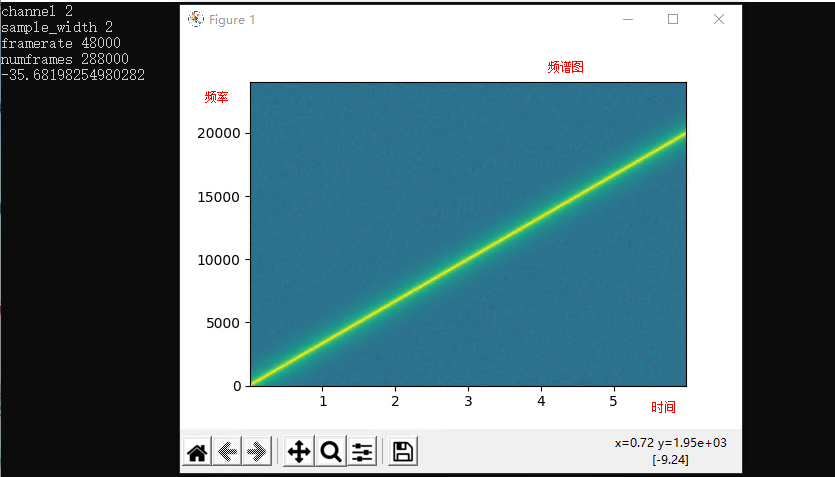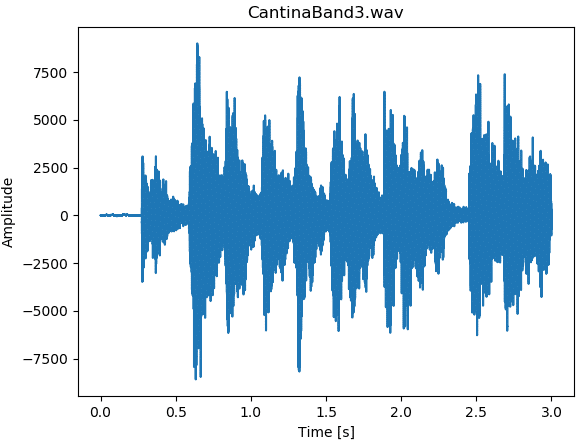
Each concrete subclass of `Formatter` takes a `WavDecoder` object in its constructor which is what is responsible for reading/decoding data from a WAV or AIFF file.

The `Formatter` class is an abstract base class which defines the interface for all formatters which output WAV data in textual formats. Use it as an iterator to process all frames: Use it as a context manager to ensure `close()` is called. The `WavDecoder` class wraps the standard library's `wave` and `aifc` modules and provides an easy way to read and decode WAV/AIFF files. The documentation is currently contained in the source files look at link./wav2vec/main.py for an example of usage. The package provides two main classes: `WavDecoder` and the abstract `Formatter` (and the concrete implementations: `SVGFormatter`, `PSFormatter`, and `CSVFormatter`). You can also `import wav2vec` in order to convert wave files to the supported output formats in your own Python scripts. It's best to instead downsample in your waveform recorder/editor before processing (or in your drawing program after processing). This is a brutal form of downsampling which will clobber high frequency and add aliasing noise. The `-downtoss N` flag will keep only 1 out of every N samples. Note also that converting very large audio files to SVG may not be practical: most SVG editors will not handle paths with hundreds of thousands or millions of points well. Note that using the `-stream` flag on files with multiple channels will result in non-continuous paths in the output (because channel data is interleaved in WAV/AIF files). $ wav2vec filename.aiff -stream 1024 > output.svg

A value of around 1024 seems to work well. The `-stream` flag requires one argument, the number of frames to read and process at a time (each frame includes one sample from each channel). This can be useful if the input file is very big and won't fit into available memory.

Passing the `-stream` flag will cause `wav2vec` to process the input file in chunks. $ wav2vec filename.wav -width 500 -height 350 > output.svgīy default, `wav2vec` reads the entire input file into memory and then streams the output to stdout as it process it. By default (if the flags are not given), the width is set to 1000 and the height to 500. In SVG these values are pixels ("user units") in PostScript the values are interpreted as pts (1/72 of an inch). Use the `-width` and `-height` options to scale the output so that its maximum bounds are equal to or less than the values following the flags. $ wav2vec filename.wav -format PostScript > output.ps `wav2vec` includes three formatters: `SVG` (default if no `-format` is given), `PostScript`, and `CVS`. The `-format` flag sets the output format. It takes an input file and outputs (SVG, by default) to stdout: Once the package is installed using pip (see above), the command can be invoked as `wav2vec`.
PYTHON PCM TO WAV INSTALL
The easiest way to install `wav2vec` is to use `pip` to install from the Python Package Index:ĭepending on your system, in order to install in the Python 3 path, you may have to use `pip3` instead of `pip`. * Can process input files in chunks so large files can be processed with minimal memory * Easy to write a custom output formatter

* Input file format is automatically detected and handled (the file name/extension is unimportant) * Portable: runs on Python 2.7+ and Python 3 and does not depend on any third-party packages. Use cases include using an audio waveform as an element in a graphic design or including a waveform in a document. wav 4.`wav2vec` is a Python script and package for converting waveform files (WAV or AIFF) to vector graphics (SVG or PostScript). wav ( p圓6 ) rob : ~/ example_test $ ls 1_16 k. In : import pyaudioconvert as pac In : pac. wav > python Python 3.6.5 ( default, , 05 : 46 : 30 ) Type 'copyright', 'credits' or 'license' for more information IPython 6.4.0 - An enhanced Interactive Python. Maybe I have a whole folder of WAVS that need converting. wav Input File : 'example_16bit_16k_1ch.wav' Channels : 1 Sample Rate : 16000 Precision : 16 - bit Sample Encoding : 16 - bit Signed Integer PCM Converting Directory of WAVs wav Input File : 'example_24bit_48k_2ch.wav' Channels : 2 Sample Rate : 48000 Precision : 24 - bit Sample Encoding : 24 - bit Signed Integer PCM #we prefer 16-bit 16kz mono for our systems, let's use python > import pyaudioconvert as pac > pac. We will use Sox until we find a fast and efficient way to convert reliably in python RequirementsĮxample Usage Converting Single WAVs #let's start with a 24bit 48kz audio wav 2 channel wav > soxi example_24bit_48k_2ch. Simple utility to convert audio from one form to another (via sox).


 0 kommentar(er)
0 kommentar(er)
